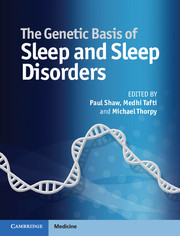
- Cited by 2
-
Cited byCrossref Citations
This Book has been cited by the following publications. This list is generated based on data provided by Crossref.
Lone, Shahnaz Rahman Potdar, Sheetal Srivastava, Manishi Sharma, Vijay Kumar and Johnson, Erik C. 2016. Social Experience Is Sufficient to Modulate Sleep Need of Drosophila without Increasing Wakefulness. PLOS ONE, Vol. 11, Issue. 3, p. e0150596.
Lone, Shahnaz Rahman Potdar, Sheetal Venkataraman, Archana Sharma, Nisha Kulkarni, Rutvij Rao, Sushma Mishra, Sukriti Sheeba, Vasu and Sharma, Vijay Kumar 2021. Mechanosensory Stimulation viaNanchungExpressing Neurons Can Induce Daytime Sleep inDrosophila. The Journal of Neuroscience, Vol. 41, Issue. 45, p. 9403.
- Publisher:
- Cambridge University Press
- Online publication date:
- November 2013
- Print publication year:
- 2013
- Online ISBN:
- 9781139649469




